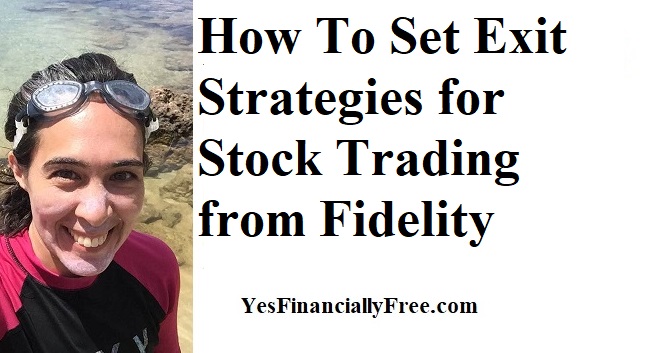
How To Set Exit Strategies for Stock Trading from Fidelity
In this blog we will be talking about How to Set Exit Strategies for Stock Trading from Fidelity.
“Why should you have an exit strategy?
Successful traders know that their greatest enemy can be their own minds. Often, emotions and loss aversion can get in the way of making good trading decisions. That’s why it’s so important that you have a plan for getting out of an investment. It’s that’s simple.
You should consider these questions before getting into a trade.
- How long do you intend to be in the investment?
- What will you be using to measure performance?
- How will you know when it’s time to get out?
Having an exit strategy is essential in managing your portfolio because it can help you take your profits and stop your losses. Exit strategies are important whether you’re an active trader or a passive investor.”
The Fidelity website goes into types of exit strategies used by stock traders.
- The 1% rule – Always cap maximum loss at 1% of your liquid net worth. So $10,000 in savings means you can only afford to lose $100 on any one investment.
- Use Support and Resistance – Stocks go up and down in value. When they seem to never go past a certain low price, that low price is support. When they seem to never go past a certain high price, that high price is resistance. You can set to sell when the price goes just under support (to stop further losses), or set to buy when the price stops hitting resistance (and lock in your profits).
- Target profit / loss ratio – “You can set profit and loss targets from a purchase price. For example, a rule could be a 2:1 or 3:1 profit/loss target. You can also use percentage terms, such as 10% profit/5% loss target or if you want something with a tighter stop a 9% profit/3% loss target.”
- Time Exit Strategy – You can decide to get out of an investment, or re-evaluate it at a certain time. Factors may have changed over time that would make it advisable to exit the investment.
The Fidelity Website then goes into how to place orders to sell a stock.
Market Order – You can use this order to buy or sell at market price. You won’t know the exact price until the order executes.
Limit Order – You can use the order to set a price at which to buy and sell. If you don’t hit the price, the order doesn’t go through.
Stop Loss Order – You can use this order to set a price where if the stock hits this price, you will then have the stock sell at whatever the market price is. If there is a sudden steep drop in price (price gap) you might end up selling at a much lower price than your target price.
Stop Limit Order – You can use this order to set a price where if the stock hits this price, you will then have the stock sell at a price that cannot go lower than a price that you set in advance (limit order).
Conditional Order – “Placing a one-cancels-the-other order, or what is also commonly referred to as a bracket order, allows you to have both a limit order and a stop order open at the same time. This allows you to lock in your potential profits and limit your losses all with one order. There’s even a way to use conditional orders to set your bracket before you enter the trade. This is known as a one-triggers-a-one-cancels-the-other order.”